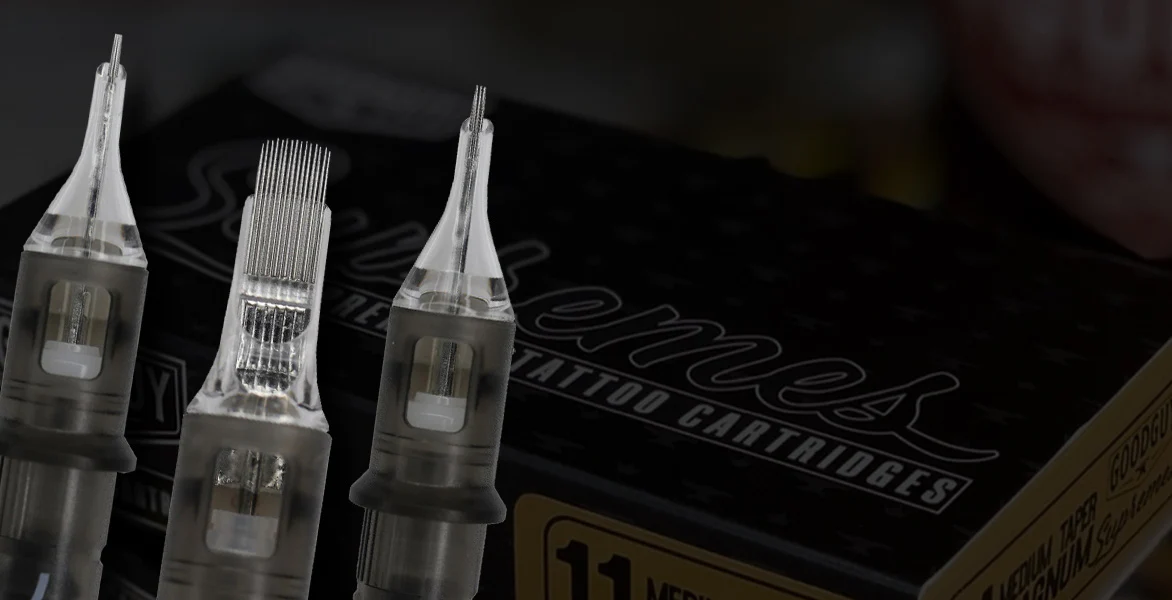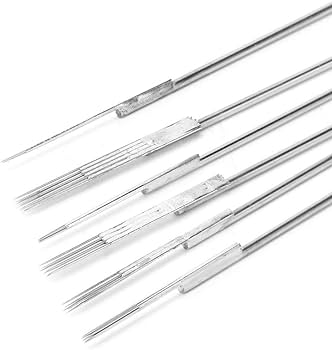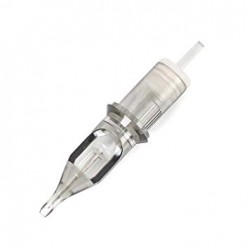Tattoo needles are the unsung heroes of the tattoo world. These precision tools are what translate your artistic vision into permanent ink on your client’s skin. Understanding the different types, sizes, and uses of tattoo needles is crucial for any professional artist. This guide will equip you with basic knowledge to choose the perfect needle for every situation.
Traditional Bar Needles vs. Cartridges
Traditional Bar Tattoo Needles
Cartridge Tattoo Needles
There are two main types of tattooing needles. The tried-and-true traditional bar needles and the more recent innovation of cartridge needles. Both effectively deliver ink into the skin, but they cater to different workflows and offer distinct advantages and disadvantages.
| Feature | Traditional Bar Needles | Cartridges |
|---|---|---|
| Material | Stainless Steel | Stainless steel, plastic tip, Silicone membrane |
| Sterilization | Presterilized. Tips, Tubes etc. require to be sterilized before each use | Pre-sterilized, including tip, safety membrane prevents contaminated ink backflow. |
| Setup | Requires assembling needles, tips, grip, and tubes, higher risk of needle stick injuries | Pre-assembled, simpler, faster, safer setup |
| Convenience | Less convenient | More convenient |
| Cost | Generally less expensive | Generally more expensive |
| Use | Preferred by some experienced tattoo artists | Preferred by beginners and some experienced artists, becoming more commonplace |
For artists prioritizing speed, safety, and hygiene, and who primarily use rotary or pen machines, cartridges are a great option.
Understanding The Different Types & Sizes of Needles
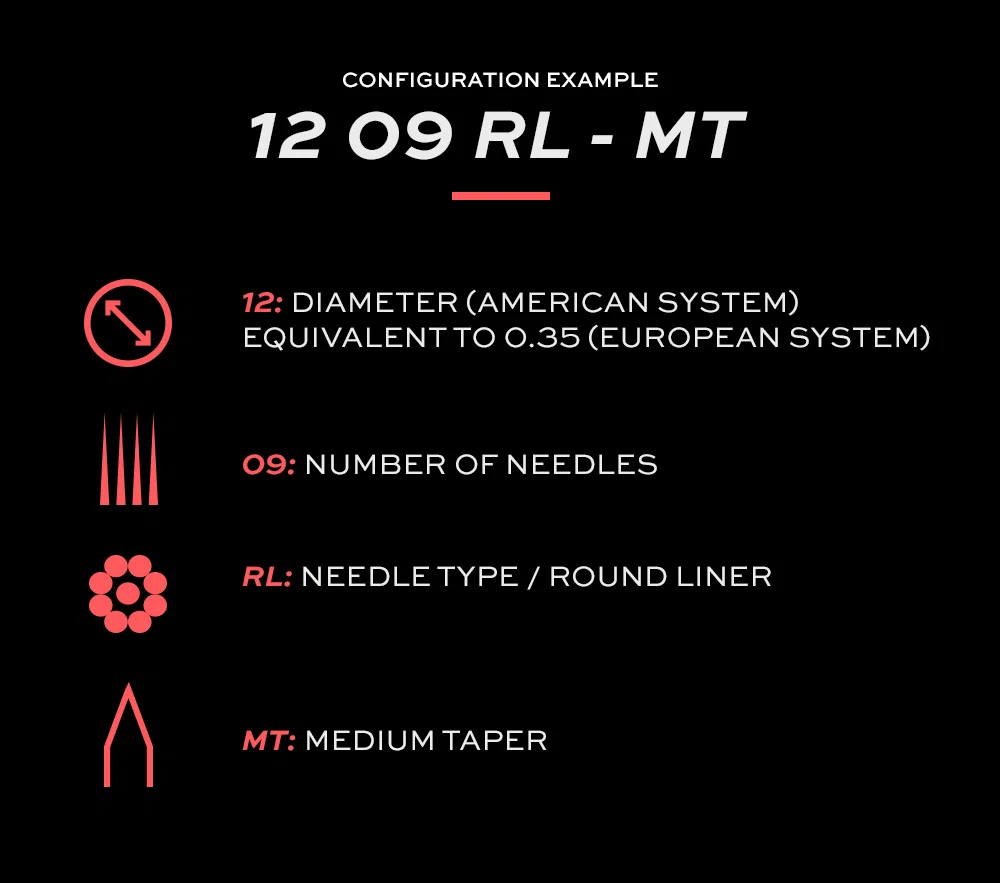
A typical tattoo needle package will have a series of numbers and letters that indicate the needle’s configuration. For example, a 1209RL-MT tattoo needle, indicates:
- 12: The gauge of the needle (standard gauge)
- 09: The number of needles in the configuration (seven needles)
- RL: The type of needle configuration (round liner)
- MT: Medium Taper: The length of the needle taper
A tattoo needle can be broken down into three key parts:
- Needle Grouping: This refers to the configuration of the needles at the tip. The most common groupings are round liners (RL), round shaders (RS), flat shaders (F), and magnums (M).
- Diameter: Measured in gauge, the diameter determines the thickness of the needle and how much ink it can hold. Smaller diameters create finer lines, while larger diameters lay down thicker lines and deposit more ink for color packing. Standard tattoo needles are #12 gauge (0.35mm in thickness). Bugpin needles #10 gauge (0.30mm) and #08 gauge (0.25) have a smaller diameter needle great for intricate lines and photorealism. Nano needles #06 gauge and smaller are generally used for permanent makeup and cosmetic tattooing.
- Taper Length: This refers to the length of the point at the very tip of the needle. A shorter taper deposits more ink with each pass, while a longer taper creates a sharper point for finer lines and detail work.
Decoding the Different Groupings of Needles
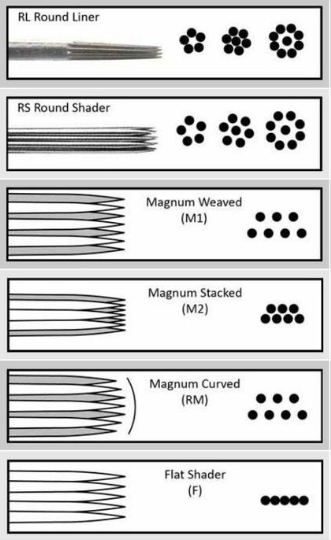
- Round Liners (RL): These needles consist of 1-18 needles tightly grouped in a circle and pointing inward to a center point. Ideal for creating clean, crisp lines.
- Round Shaders (RS): Similar to round liners but with the needles spaced farther apart, allowing for smoother color packing and shading in tight areas.
- Flat Shaders (F): Flat needles are arranged in a straight line, offering excellent control for precise lines and even color saturation.
- Magnum Shaders (M): These come in various configurations with multiple rows of needles, ideal for efficient shading and color packing larger areas. Variations include magnums (M1) and stacked magnums (M2).
- Hollow Point: A type of round liner configuration needles that leaves a circular hole in the centre of the grouping which allows the needles to pick up more ink, meaning the artist doesn’t need to return to the ink pot as often
- Apex or Power or Turbo Liner: Similar to a hollow point liner but with an additional deeper set centre needle which means the needle draws more ink but also disperses it better.
Pro Tip: Refer to a needle manufacturer’s chart to understand the specific number of needles in each grouping and their recommended uses.
Finding the Right Needle for the Job
- Linework: For thin, delicate lines, opt for a tight grouping like a 3RL or 5RL with a short taper. For bolder lines, use a larger grouping like a 7RL or 9RL with a standard taper.
- Shading & Color Packing: Round shaders (5RS, 7RS, etc.) with medium tapers are great for all-purpose shading. For larger areas, magnums (M1 or M2) excel at laying down color efficiently. Flat shaders (5F, 7F) are another option for color packing and shading, particularly when creating crisp lines within shaded areas.
- Detail Work: For fine lines, intricate details, and photorealism, consider tight groupings like 1RL or 3RL with a long taper and you could also try thinner gauge needles #10’s or #08’s to achieve the desired effect.
Remember, this is just a general guide. The specific needle choice will depend on the desired effect, the artist’s preference, and the client’s skin type.
Additional Considerations
- Texture: Textured needles are needles with an unpolished taper, this means they have more texture and pick up ink and hold it better, some tattoo artists prefer polished untextured needles as they cause less trauma to the skin.
- Needle Material: High-quality stainless steel is the industry standard for tattoo needles.
- Sterilization: Always use pre-sterilized and individually sealed needles.
- Proper Disposal: Dispose of used needles safely in designated biohazard sharps containers which are disposed of as required by regulations at a professional medical waste disposal company.
- Expiry Dates: Pay attention to expiry dates and always check expiry dates on needles before use, expired products should only ever be used for practice on synthetic skin.
To browse our range of tattoo needles and cartridges for sale and to buy online visit this link. Suppliers of premium grade and precision pre-sterilized stainless steel tattoo needles in a wide range of configurations and sizes.

